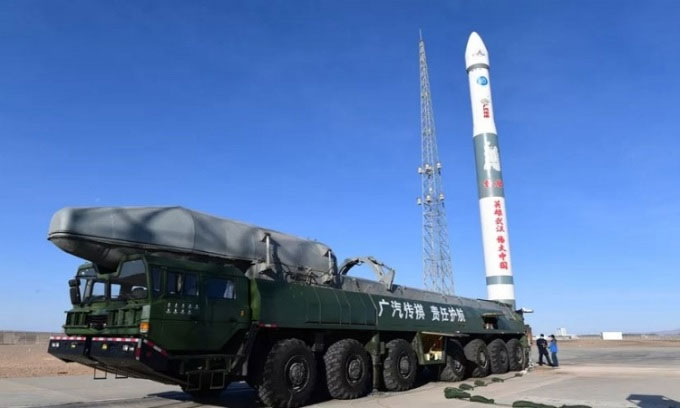The solid-fuel rocket Kuaizhou-1A experienced a launch failure shortly after takeoff on the evening of December 14, resulting in the loss of two commercial satellites intended for testing enhanced positioning for autonomous vehicles.
The lightweight cargo rocket Kuaizhou-1A lifted off from the Jiuquan Satellite Launch Center in the Gobi Desert at 9 PM local time on December 14. The launch vehicle malfunctioned a few hours later, and authorities are currently investigating and analyzing the specific cause. The flight was carrying the first two satellites from Geespace, a subsidiary of Geely. These satellites are designed to test positioning support and connectivity for autonomous vehicles.

Kuaizhou-1A rocket on the launch pad before the incident. (Photo: CASIC)
This failure significantly impacts the commercial launch service provider Expace, a branch of the China Aerospace Science and Industry Corporation (CASIC). CASIC and Expace had planned to conduct seven launches over the next three months for various clients. The Kuaizhou-1A rocket is likely to remain inactive until the investigation concludes and the issues causing the failure are resolved.
Expace successfully launched the Kuaizhou-1A rocket three times in September, October, and November. Previously, the Kuaizhou-1A rocket had a failed launch in September 2020. CASIC and its subsidiaries also plan to create a constellation of 80 narrow-band satellites named Xingyun, with plans to launch at least 12 Xingyun-2 satellites in 2022.
The most recent mission marked the 14th flight of the Kuaizhou-1A rocket and its second failure. The rocket’s first launch occurred in January 2017. The vehicle consists of three solid-fuel stages and an upper stage that uses liquid propellant. Kuaizhou-1A can carry a payload of 200 kg to a Sun-Synchronous Orbit (SSO) at an altitude of 700 km above the Earth’s surface.
Geely has not disclosed specific details about the pair of satellites. In March 2020, the company announced plans to build a $326 million factory in Taizhou, Zhejiang. The factory began producing satellites in October of this year, with a capacity of over 500 satellites annually.

















































